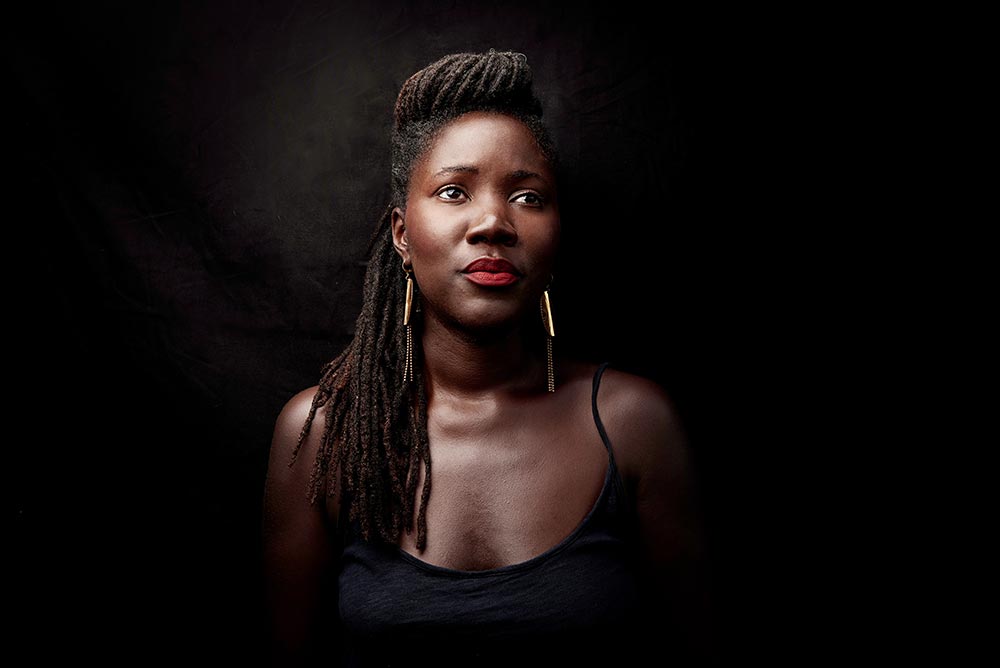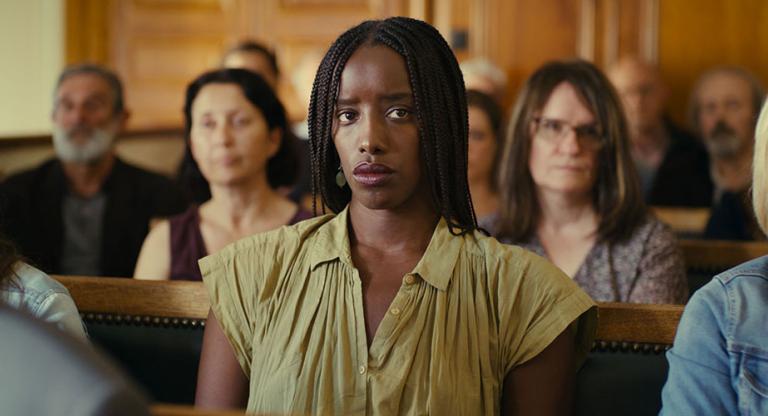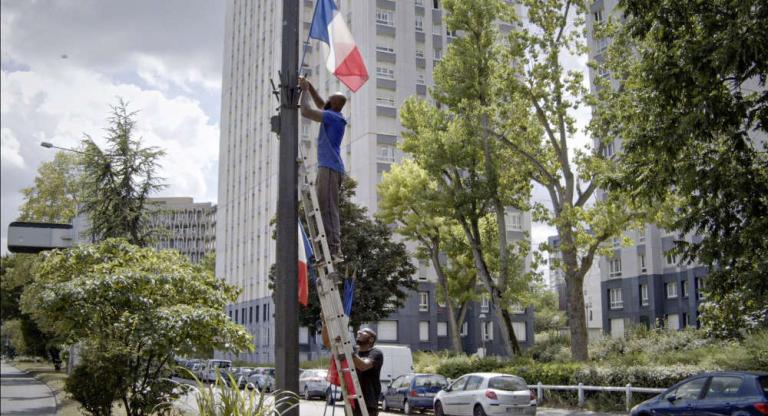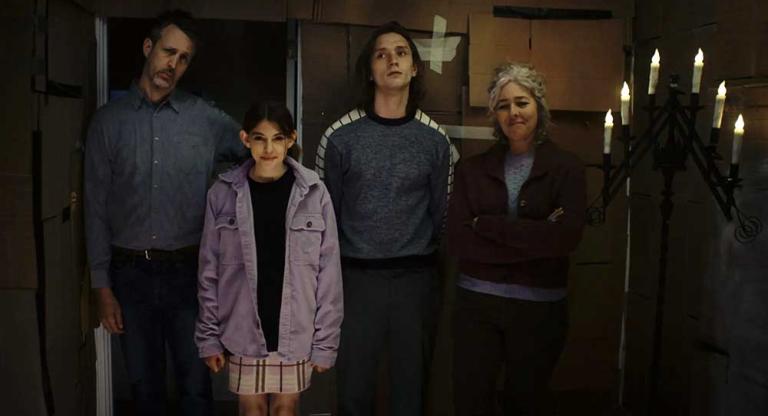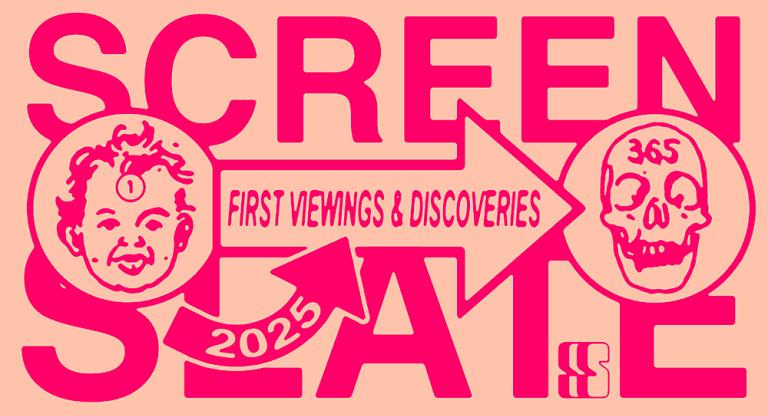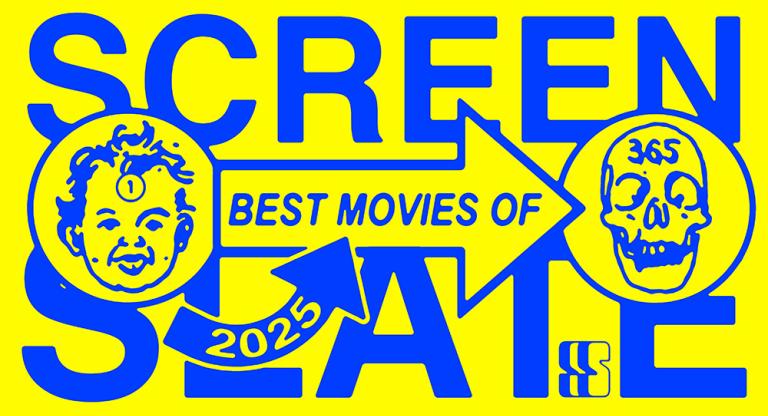Although the exuberant amazement of Saint Omer’s (2022) reception has at times suggested otherwise, Alice Diop is hardly an emerging filmmaker. The sensitive and political eye behind her latest and most visible work has been trained over the course of a career that spans nearly two decades. While Saint Omer has certainly received her most prestigious acknowledgements to date—the Prix Jean Vigo, two awards at the Venice Film Festival, and representing France on the Oscar shortlist for Best International Feature—the earlier La Mort de Danton (2011), La Permanence (2016), Vers la tendresse (2016), and Nous (2021) had already received high honors. More importantly, Diop’s filmmaking merits more careful attention than exceptionalizing only one film or reducing her work to a checklist of awards. Diop is a historical filmmaker in the least usual but most urgent ways. Although none of her films abide to historical genres in any traditional sense, they are all dynamic participants in the ongoing necessity of interrogating and revising the narratives of the past—particularly those produced by dominant structures of power. As a rejoinder to this orientation, Diop actively refuses the ahistorical tyranny of the exceptional which shadows so many black women filmmakers; her work intentionally enlivens a lineage to which she has not always had access.
This disinterest in being made into a singular, totemic figure resonates beautifully with Saint Omer’s positioning toward doubling and collective ways of being. Diop’s feature is a retelling of the circumstances of an infanticide committed in 2013 by a Franco-Senegalese philosophy student, Fabienne Kabou; the screenplay is co-written with editor Amrita David and author Marie NDiaye. The film opens with a dreamy, unsettling confusion between the two central characters, Laurence Coly (Guslagie Malanda) and Rama (Kayije Kagame). Before she has a face and a name, Laurence appears walking on a dark beach, in partial profile and holding a small bundle in her arms, accompanied by the sound of waves crashing. When the sequence cuts to Rama waking up and calling out for her mother, it is almost as though what came before was her own nightmare. Later, when Rama arrives from Paris to the town of Saint-Omer, where Laurence is on trial, she disappointedly examines the hotel room bedding before stripping it off the mattress and replacing it with her own cover—a dark, satiny blue duvet that eerily recalls the nocturnal sea.
While the poster for Saint Omer might point to an identity play comparable to Ingmar Bergman’s Persona (1966), and although the film masquerades as a courtroom drama, it is rather a patient character study which places mothers at its center. Displacing genre theatrics, Diop’s film lingers on how immigration, colonization, race, class, and gender converge on collective and individual negotiations of motherhood, especially for the two Franco-Senegalese women at the heart of the narrative.
From the specific position of Black women, or the particularities of racialized suburbs, or the marginalized conditions of immigrants, Diop challenges the hegemonic orders not only of cinema but also of our shared knowledge of the world. While she is a filmmaker of evident rigor with an affinity for formalist constructions, there is a hospitality to her method, reflected in how Saint Omer skirts questions of innocence or verdict and makes no efforts to impose a conclusive reading on the audience. In her own words, Diop illuminates a cinematic approach that has always tended toward elastic experimentation.
Ambivalence can be the refuge of political opportunism and ethical laxity. This is not the case in Saint Omer. Diop puts ambivalence in the service of complexity, unknowing, and opacity. There are clear stakes to her approach: redressing the manipulative amnesia, brutally rigid caricatures, and demeaning exclusions with which marginalized peoples have been misrepresented in dominant visual forms. In this sense, her latest film is a natural continuation of her previous work in documentaries. Regrettable fixations on Saint Omer as Diop’s fiction debut detract from the far richer continuum of a filmmaker who has a place alongside those who have long contested the traditional borders in cinema.
The following interview was conducted in person on Tuesday, January 10, and translated from French by the author.
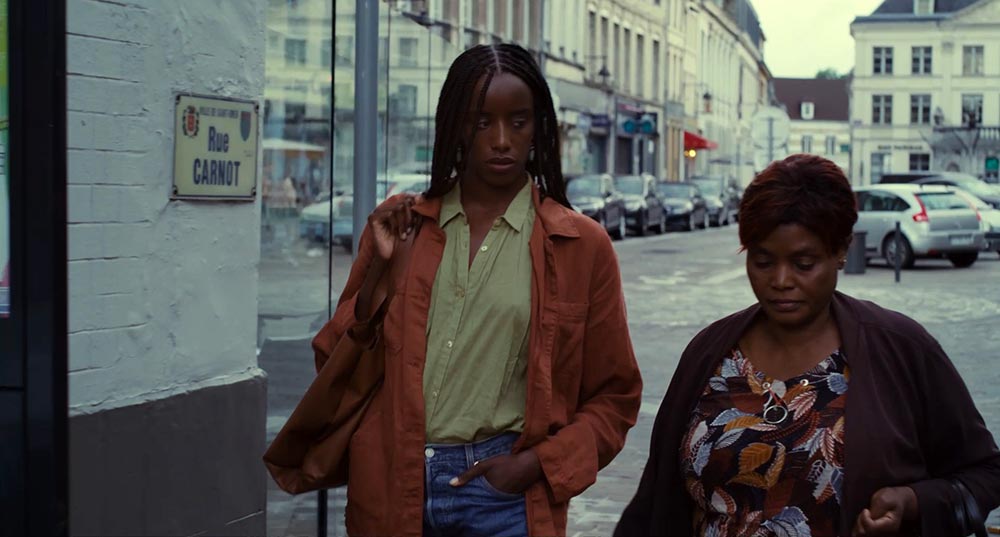
YP: I think the division between documentary and fiction is more porous than it is rigid. In the case of your work, there is an evident continuity between Saint Omer and all your previous films. For example, at the formal level, the patience of the long takes in this film is the same in Nous [2020], and both films interrogate the act of looking itself—as a politicized action, structured through race, class, gender etc. Could you speak to these and other continuities?
AD: Thank you for this question because in fact I see no difference between fiction films and documentaries, and moreover each film I make is an extension of the questions surfaced by the previous one. For me, Saint Omer is a continuation of the questions which have propelled me since I began working in cinema, and it’s almost a development or an outgrowth of the questions I held onto in Nous. It is true that few people notice this or see this, so thank you very much for giving me an opening into speaking about this. I completely agree with you. I became a filmmaker due to a lack of representation, a resolve to interrogate the ways that we see or do not see the black body, and particularly those of black women, and the ways certain narratives have been confiscated, or certain narratives have been stalled entirely, and how these absences condition our ability to perceive ourselves. It is almost as though there is this subterranean territory that allows for our social encounters and belonging, and that shared territory had not been expressed or told. This suggests a vast cinematic territory of exploration, which is the same in fiction or documentaries. This is to say that when I shot Ismaël [a Malian immigrant and car mechanic who appears in Nous], or when I decided to devote a substantial portion of the film [Nous] to my sister, or when I nurture this interest in Fabienne Kabou, who becomes Laurence Coly in the film, it is all motivated by the same thing. It is a necessity, a way to repair what has not been told and to explore the contemporary world from my own position and what I say and tell about it, which is beyond the scope of what should only interest black women or only black communities but should interest everyone, because it bears on this world we all inhabit collectively.
YP: What you’re offering is a way to re-see or look differently at everything. Seeing and looking are taught, learned, and trained—and so they may be organized otherwise, precisely through the act of re-situating and multiplying the positions from which that is done.
AD: Certain positions [of seeing] are sparsely inhabited [in cinema], and yet they allow for seeing the world from the position of a black woman, who is the descendent of a colonial history. What she sees of the contemporary world is something that enriches a collective knowledge of that world.
YP: So much, if not all, of your filmography has entailed a counternarrative to the white, western, dominant orders of seeing. I see you in a lineage with someone like Safi Faye, with an auto-ethnographic approach that involves a degree of distance, but also intimate involvement and familiarity—seen, for example, in your use of home movies in Nous and even the proximities which led you to Kabou’s story. Is there some influence there?
AD: Unfortunately, I was not influenced by Safi Faye. In fact, the great tragedy surrounding her is [that she is] a filmmaker who has not been cared for or about. Because of this, her films did not reach me, to my immense despair, and in fact many of the great black women filmmakers I only found out about very late. I’m only now discovering the work of Sarah Maldoror, and this encounter happening so late is both something very political and also such a loss for the filmmaker I have become because I would have needed to know her films earlier on, to construct myself as a filmmaker with that knowledge and so not feel like I was repeating things without end. Safi Faye is someone who I know by name, but her films were largely unavailable to me because they’ve been little distributed, screened, or promoted. It is very important for me as a woman filmmaker, it was one of my first acts as a filmmaker to act on the importance of taking care of the women that came before and to use this attention I’m receiving to illuminate all the work of these pioneering women filmmakers who have been neglected. It is on us as their daughters and inheritors to care for that legacy, in ways that men—scholars and filmmakers—of their generation did not. It’s so interesting to see, for example, how Spike Lee and Kathleen Collins began [working] around the same time in the 1980s, but in comparison she received so little attention and support. It was not necessarily the fault of the filmmakers themselves but even when you look at the spread of black filmmakers, black women filmmakers are always less present, an afterthought. For us today it’s important to repair this wound, because it was not just them but also us who were harmed by that absence and erasure. It’s a lack that prevents us from moving forward, from fashioning ourselves after everything they already did, building on it. To not have known, to not have had the opportunity to shape ourselves from this inheritance, I find, is a loss for all our filmographies. I can only refer myself to Safi Faye across that disconnection of not having had access to her films for so long.
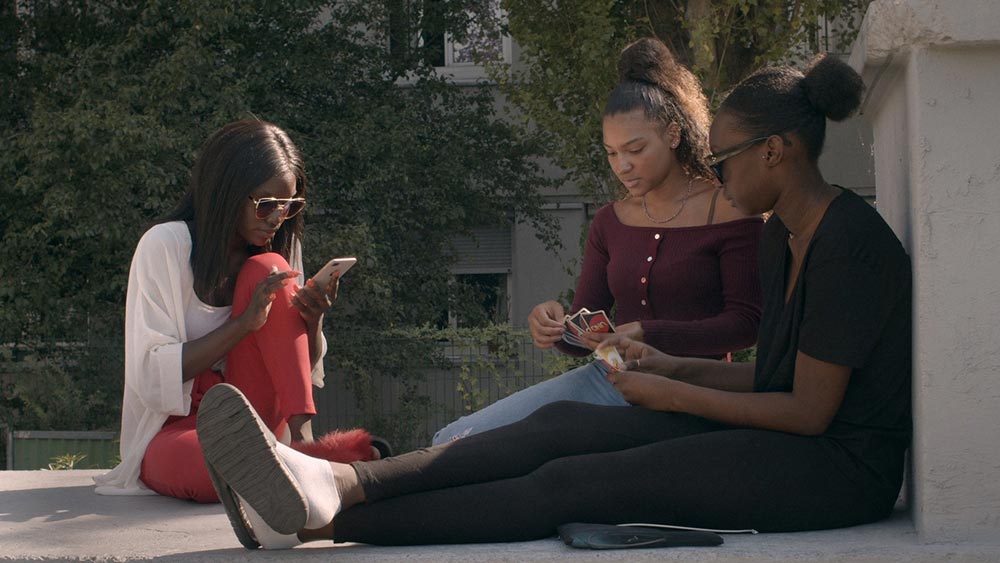
YP: Yes, of course, because the absence of Safi Faye in what has been available to you, or available generally, is produced by the same racialized and gendered exclusions that you are addressing through your filmmaking. There is both a dark irony and poetic justice. Alongside the references to Hiroshima Mon Amour (1959) and the “shaven women” in France after the war, Rama speaks about how language can confer grace on these publicly humiliated and shamed women. This suggests a larger point on the labor and function of aesthetics which might also be inhabited in the way Saint Omer seems to protect Laurence Coly and through her, Fabienne Kabou. Could you speak to the intentions behind your film in these terms?
AD: What my filmmaking seeks to redress is the invisibility, the absence, the silencing, the marginalization [of certain people] and to place at the center of the shot bodies who have been historically and politically pushed to the margins of dominant forms of representation. For me, the act of repair is already there in what I put at the heart of my films, in the centering of my mother’s body in Nous. I interrogate the absence of certain narratives but more than that the absence of a will to even readdress what has been absented. What is worse than not being represented is not having a belief that your story is even worth telling. My parents told me little about the lives they left behind because it was, in a way, a story of defeat, and this absence conditioned me and made me enter the world with an enormous fragility. You’re left feeling as though what you can tell of yourself, what you can say and who can be, is not legitimate, does not merit being told. And so the films I make repair the way I entered into the world with this false idea that was transmitted by my parents but had been imposed on them through the violence of this colonial system which relegated their own histories to something that was not even deserving of being shared. So finally becoming a filmmaker, centering these stories, narratives, bodies—inventing cinematic forms to express everything that hadn’t been told for me—is also a psychoanalytic form of repair.
YP: I’m interested in how memory is functioning in Saint Omer. The references to Hiroshima summon the idea of national memory, and in the French case that comes with so much amnesia where colonialism is concerned. There are also much more intimate forms of memory being worked through.
AD: I’m a descendant of a colonized people, and I can see how colonial histories continue to haunt the present. Their haunting is all the more violent because modern European societies, particularly French society, is constantly hitting the brakes on the confrontation with those histories. Yet those histories continue to affect and shape our lives in France—the return of the repressed [memory], which is always all the more felt when the amnesia continues to be intentionally produced. For me, remembrance is an avenue of collective liberation. I studied colonial African history, and I know how much just learning about them allowed me to understand the racist violence which continues to exist in French society. At least knowing where that racial terror comes from permits us to know how the black body was constructed through this racism, and it was in turn inherited from colonization, which continues to contaminate the social relationship in France. Knowing where something comes from is the first step to knowing how to rid ourselves of it. Of course, this is not just black people who need to be freed from this violent gaze—this involves everyone. We all need to confront what history produced. That was fundamental to my university studies, and this is what I try to accomplish in my films. Even though I don’t make historical films, the way that I film modern French society is also a way to keep confronting and interrogating the way that history continues to act on us and condition us. So, for me, memory is the source of everything. Certain forms of remembrance need to be resurfaced so that we can transform our present. Racism is inherited. The ways that we perceive that certain people are minoritized, all of it is inherited. If we are not capable of looking at where those inherited perceptions came from, how and why they were generated, what they say and what function they’ve had, then we can’t rid ourselves of them.
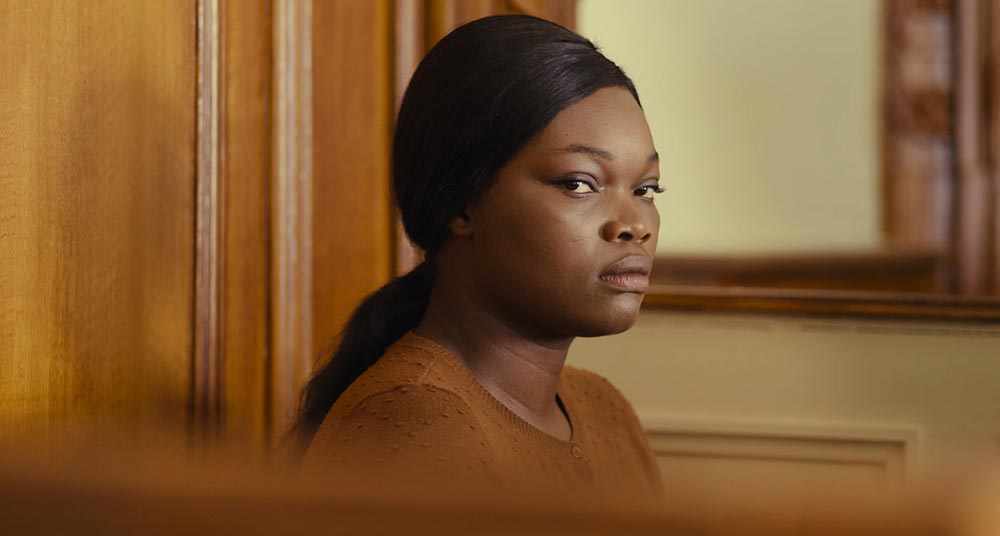
YP: That closing speech by Laurence’s counsel leans on a connection between mothers and chimeras—these hybrid creatures of Greek mythology which open onto hybridity and syncretic forms more generally. Saint Omer and your earlier films have a similar quality, of a multiform composite, playing in a hazy space across documentaries and fictions in a way that—perhaps because of the focus on mothers—makes me think of Chantal Akerman.
AD: It’s not intentional but by virtue of myself being a product of cultural hybridity, being now between documentaries and fiction films, as a black woman who lives in Europe and is very much shaped by European cinephilia, honestly more than African cinephilia, my films are by necessity creolized. And yes, the cinema of Chantal Akerman has influenced me very much, and specifically in the way she navigated fiction and non-fiction, her work as a formalist filmmaker, the way all her films are so different from each other, her constant experimentation.
YP: Why did it matter for you, David, and NDiaye to base the script on court transcripts from the Kabou case? More than any of your other films, Saint Omer reveals the literary qualities that have always been present in your filmmaking and specifically your attention to language, which carries a particular weight in the context of the law. Can you speak to the importance of language in your filmmaking?
AD: The question of language is essential in my filmmaking. I think I may be more influenced by literature than cinema. I’m a bit of a frustrated writer. Which is to say that I am obsessed with language, the clarity of language—especially because we have been absented there, and as black women, I have the impression that exercising authority there is a political gesture. To speak ourselves, to tell our stories on our own terms and as precisely as possible, is politically very important for me. So I am very careful about the ways I express myself and how I speak because I sense there is both an enormous responsibility there and that it’s a way to reappropriate a narrative that has mostly been constructed against me or without me. The question of language is fundamental and is in fact at the source of the desire for me to have made the film [Saint Omer]. It was the very specific language of Fabienne Kabou, which could easily be the envy of writers and novelists. It’s no accident that I turned to a writer like Marie NDiaye to write a film about this woman who, in the way she spoke, undid all the assumptions, challenged all the phantasms, and presented a contradiction rarely seen in literature or cinema. The complexity of this woman was carried by the way she expressed herself verbally, which fascinated me. The primary source of this film is the words of Fabienne Kabou. I could not have made it without her language. Without that, the film would have been a sordid spectacle about a horrific crime—because the crime is horrific, but what allows us to also perceive beyond only the crime is that language. I think that at the source of the desire is the language of this woman, which might have been the envy of someone like Marguerite Duras. Kabou’s speech fascinated Marie NDiaye, who also followed the trial, because it had qualities that are so evident to a writer. In terms of how we wrote the script, it was very inventive. We invented a way to work that was not common to any of us, which was not technical but involved many conversations about this woman—very intimate and personal conversations about how we were affected by this story. From there, we began to generate these scenes. I have trouble explaining how we worked because it was so singular and non-reproducible and almost not narratable.
Saint Omer is now playing at Film Forum and Film at Lincoln Center. Alice Diop headshot by Cyrille Choupas, courtesy of Super.
